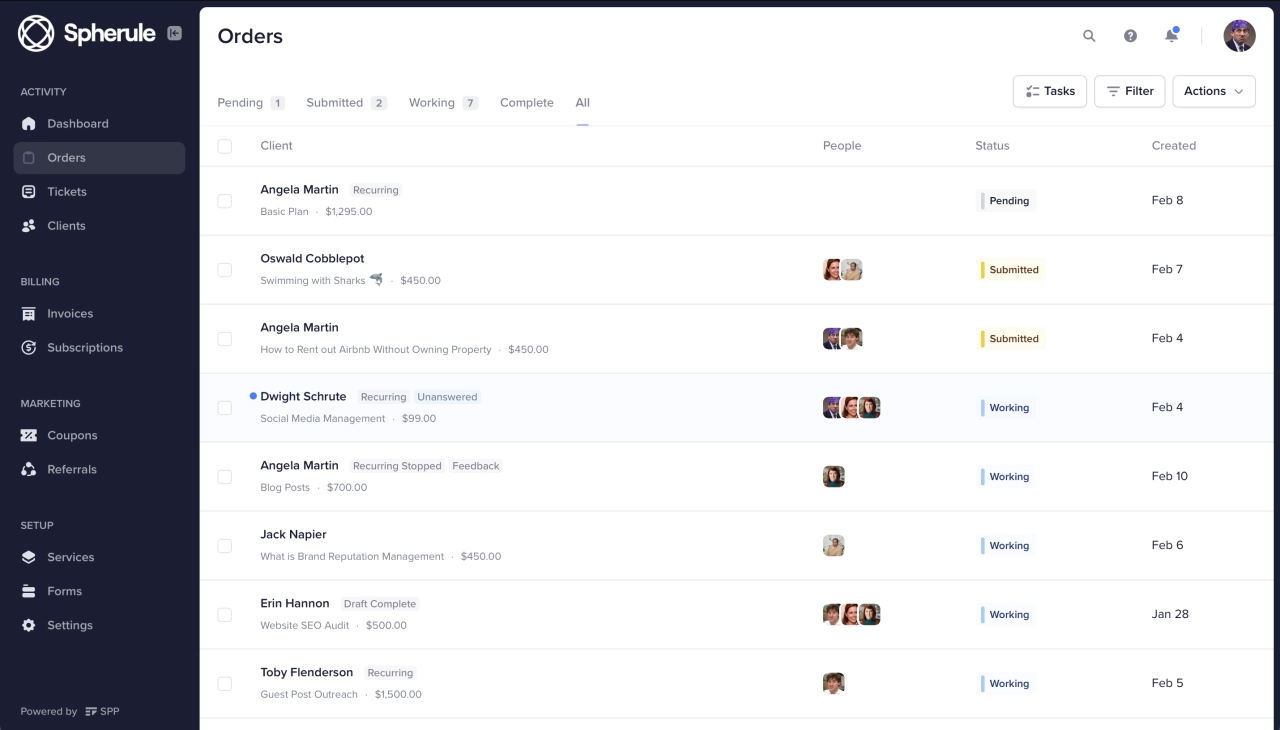- Use the 5-trait framework and interactive assessment tool to determine if your service is actually suitable for productization before you invest time and resources into the wrong business model.
- Learn when not to productize—including four clear red flags that signal you should stick with custom work instead of forcing your service into a fixed package.
- See how five businesses across different industries successfully productized their services, from WordPress optimization to social media management with specific examples.
How many times have you finished a complex, custom project and thought to yourself, “There has to be a more scalable way to do this”? You’ve heard the term productization thrown around. It promises predictable revenue, an end to scope creep, and a path to scaling your agency without cloning yourself.
But the promise of scalability comes with a healthy dose of fear. Will you lose the magic that makes your service special? Will clients feel like they’re just getting a cookie-cutter solution?
As an agency operations specialist, I’ve seen countless owners get stuck right here, in this exact state of analysis paralysis. They spend months debating the what ifs instead of making a confident decision.
Let’s get you unstuck. We’re going to answer the most critical question first: should you productize? Not how to do it—that comes later. Right now, we need clarity on whether productization makes sense for your specific service. This is your framework for getting to a confident “yes, and here’s why” or “no, and here’s why not.”
Understanding this topic involves several interconnected concepts:
Each of these concepts plays a crucial role in the overall topic.
The 5 core traits of a productizable service
Let’s start with what makes a service actually productizable. Not every service fits this model—and that’s okay. But if your service has these five characteristics, productization could transform your business.

Repeatability: You’re doing essentially the same thing for most clients. Typically, about 80% of the work stays consistent from project to project, with only minor variations based on specific client needs.
Teachable process: You can document the entire workflow in a way that someone else can follow. If the service only works when you do it—because of your specific expertise, relationships, or creative approach—it’s going to be difficult to scale beyond yourself.
Specific outcome: The service delivers a clear, tangible result that the client values. You’re selling the outcome, not the hours. “A landing page optimized to convert at 5%+” is specific. “10 hours of web design work” is not.
Defined scope: You can draw a clear line around what’s included and what’s not. This clarity protects you from scope creep and sets accurate client expectations. When someone buys your productized service, they know exactly what they’re getting for a fixed price.
Market demand: There’s a clear group of clients actively looking for this solution. You’re solving a problem that shows up repeatedly in your market, not creating a solution and hoping to find buyers.
Productized services rule because they hit all of the entrepreneur buzzwords. Trainable, repeatable, profitable, scaleable, and eventually sellable.
 Greg Isenberg,
Late Checkout
Greg Isenberg,
Late Checkout
If you’re reading this list and thinking, “Yes, my service checks most of these boxes,” that’s a strong signal. Let’s test it.
The productization suitability assessment
I’ve built an interactive assessment tool that evaluates your service across three critical areas. It takes about 2 minutes and gives you a concrete score showing exactly where you stand.
What it evaluates:
Process & deliverables: Can you systematize your delivery?
Client & market: Is there clear, urgent demand?
Business & scalability: Can this grow without you?
What you’ll get:
your overall readiness score (out of 75)
section-by-section breakdown showing your strongest and weakest areas
personalized recommendations based on your specific gaps
your #1 priority to address first
Productization Readiness Assessment
Take this 2-minute assessment to see if your service is ready for productization.
You’ll see what gaps need fixing before you commit time and money to productization.
What your scores reveal
The assessment uses a 75-point scale to evaluate how ready your service is for productization:
60–75 (high suitability): Your service is ready to productize. You have a repeatable process, clear market demand, and the operational foundation to scale. Focus on execution.
50–59 (good with gaps): You’re close. Your service has strong potential, but there are specific areas that need work before you launch. The assessment will show you exactly what to fix first.
35–49 (moderate suitability): Significant work is needed. This doesn’t mean productization is impossible, but you’ll need to invest in systematizing your delivery, clarifying your offering, or validating market demand before moving forward.
Below 35 (low suitability): Your service may not be a good fit for productization right now. Consider starting with a smaller, more focused offering or addressing fundamental business model issues first.

Section-level scores:
Green (20-25): Strong performance—this area is ready
Yellow (15-19): Needs improvement but workable
Red (Below 15): Critical gap requiring immediate attention
Special note on process & deliverables: If section 1 scores below 15, you’ll see a warning. You can’t scale chaos. Fix your delivery process before attempting productization, or you’ll just productize inefficiency.
The tool automatically highlights your lowest-scoring section as your #1 priority to address first.
The biggest benefit of productized services is the ease of selling. Your sales leads will be significantly more qualified. With productized consulting, you’re advertising the scope of work and price upfront, so clients have a much easier time making a purchase decision before contacting you
 Kurt Elster,
Ethercycle
Kurt Elster,
Ethercycle
This is what you’re working toward—qualified leads, faster sales cycles, and clients who understand exactly what they’re buying.
Red flags: when not to productize your service
The smartest business decision is sometimes knowing what not to do. The productized business model works incredibly well for certain services and completely undermines others. Here’s when you should stick with custom work.
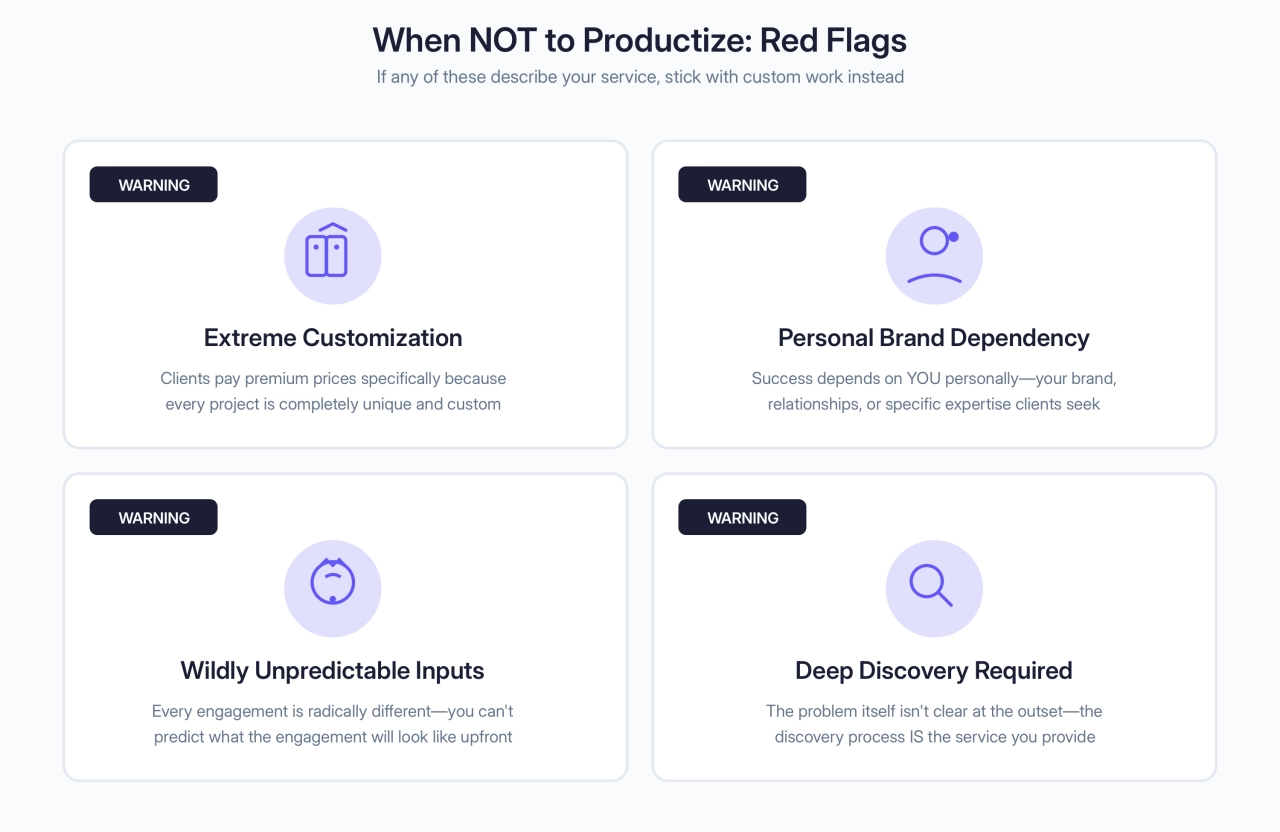
Your value is extreme customization
If you’re a high-end branding agency where clients are paying premium prices specifically because every project is completely unique, productization undermines your core differentiator. When custom from scratch is the value proposition, a fixed package can actually devalue your work.
Success depends on you personally
If clients are buying access to you—your personal brand, your strategic thinking, your specific relationships—productization will likely disappoint them. This applies to celebrity consultants, high-profile strategists, and advisors whose value comes from their individual reputation and network, not a transferable process. For consultants who can systematize their approach, productized consulting offers a different path.
The inputs are wildly unpredictable
Crisis communications firms can’t productize their core service because every engagement is radically different. The same goes for emergency response, complex litigation support, or disaster recovery consulting. When you can’t predict what the engagement will look like, you can’t package it.
The service requires deep, evolving discovery
Some consulting engagements can’t start with a fixed scope because the problem itself isn’t clear at the outset. The discovery process is the service. Management consulting, organizational transformation, and complex strategic advisory work often need this level of flexibility. Trying to productize this forces you to solve the wrong problem.
If any of these describe your service, you’re better off with a custom model. Productization isn’t the answer for every business—and that’s perfectly fine.
Real-world productization examples across industries
Productization isn’t just for SEO agencies or social media managers. The model works across wildly different industries—you just need to identify the repeatable process and package it effectively. Here are five examples showing how different businesses made it work. (You can find more productized services examples on our blog.)
WP Speed Fix: WordPress performance optimization

Web developers traditionally charge hourly for site optimization work, which makes budgeting difficult for clients and scaling nearly impossible for agencies.
WP Speed Fix packages WordPress speed optimization into fixed-price services. They offer a free site speed audit upfront to capture leads, then deliver standardized optimization with consistent outcomes. All optimizations are one-time fees, with optional recurring maintenance packages for ongoing support.
Why it works: The technical process is highly repeatable, the deliverable (a fast-loading site) is specific and measurable, and market demand is clear—every WordPress site owner wants better performance.
GMB Gorilla: Google Business Profile management

Local SEO consultants typically bundle GMB work into larger, unpredictable consulting engagements, which makes it hard to price and deliver consistently.
GMB Gorilla focuses exclusively on creating, optimizing, and managing Google My Business profiles through a monthly recurring service. They handle profile monitoring, create promotional posts, and respond to questions—all for a fixed monthly fee.
Why it works: Instead of one-time setup, they built a recurring revenue model with ongoing optimization, monitoring, and content creation. By niching down to one specific service, they created predictable revenue and a scalable business model.
Measurely: conversion tracking for agencies
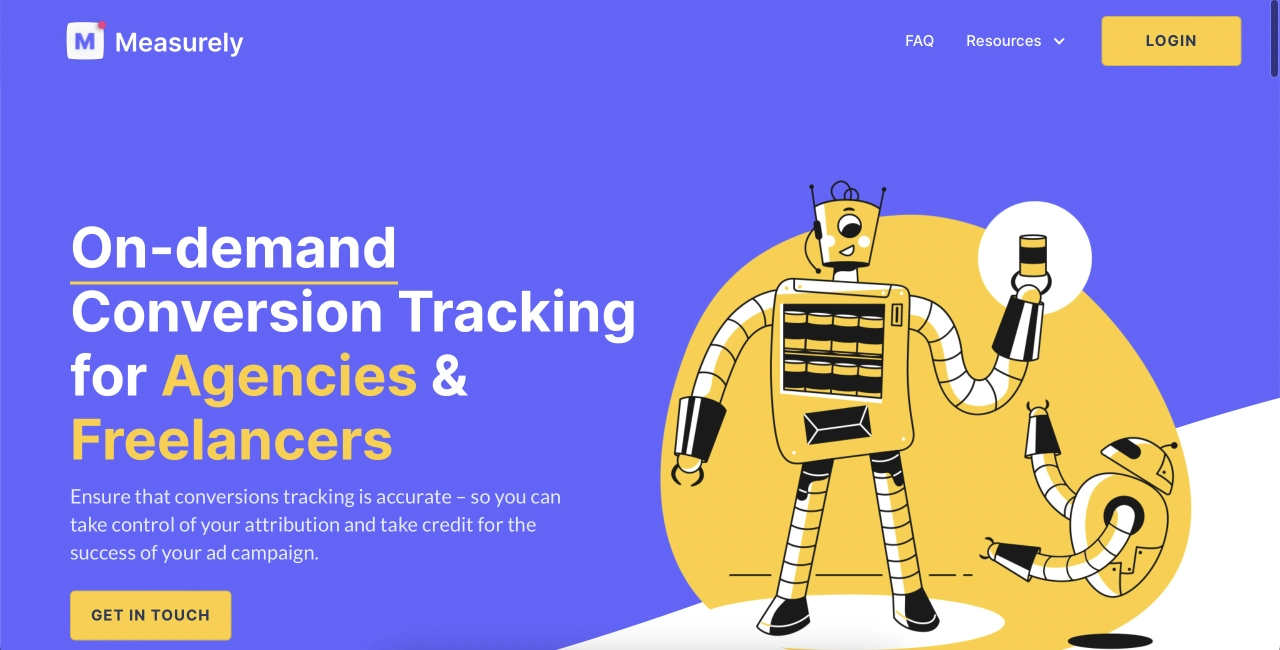
Agencies struggle with conversion tracking setup, but hiring a full-time specialist rarely makes financial sense.
Measurely.io targets agencies specifically with fixed-price conversion tracking setup, audit services, server-side tracking implementation, and Google Analytics 4 migration. Founder Jonathon Deakins recognized that this technical service is both highly repeatable and in constant demand.
Why it works: By focusing exclusively on conversion tracking—a clear pain point for agencies who need the work done but don’t want to hire full-time—they created a strong niche with predictable demand.
Roast My Landing Page: conversion optimization consulting
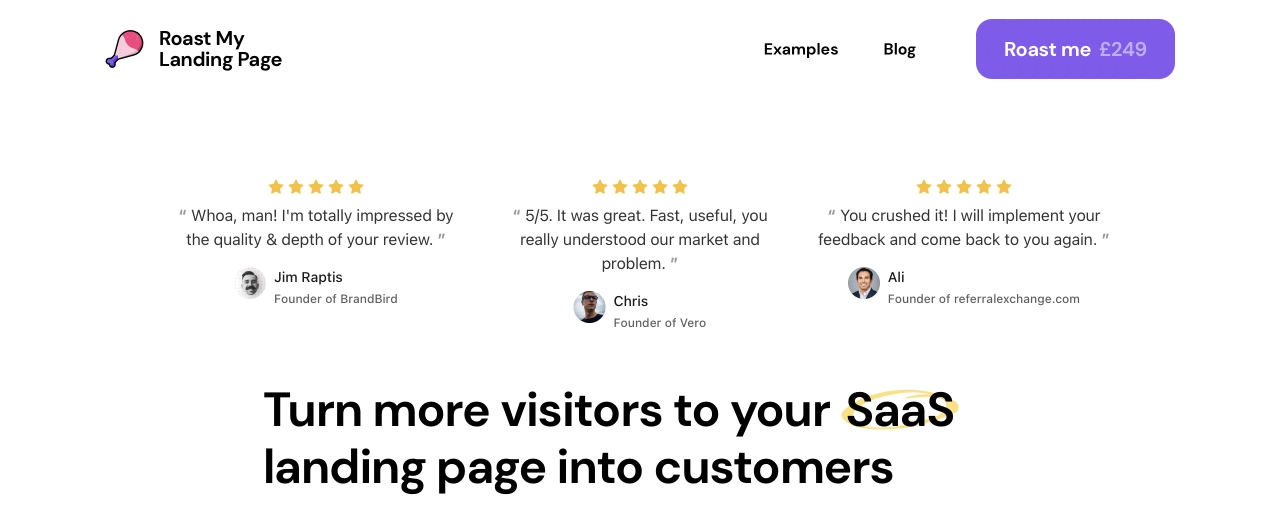
Conversion rate optimization consulting typically requires lengthy discovery calls, proposals, and custom engagements.
Oliver Meakings created a brilliantly simple offer: for a fixed price, he records himself reviewing your landing page and provides specific feedback on what works, what doesn’t, and how to improve it. The service leverages his 20+ years of CRO experience and delivers a specific outcome (actionable feedback) through a completely standardized process (video roast).
Why it works: By eliminating the lengthy consultation process and standardizing the deliverable, he created a scalable service that maintains high quality while removing the typical back-and-forth of consulting work.
100 Pound Social: social media management
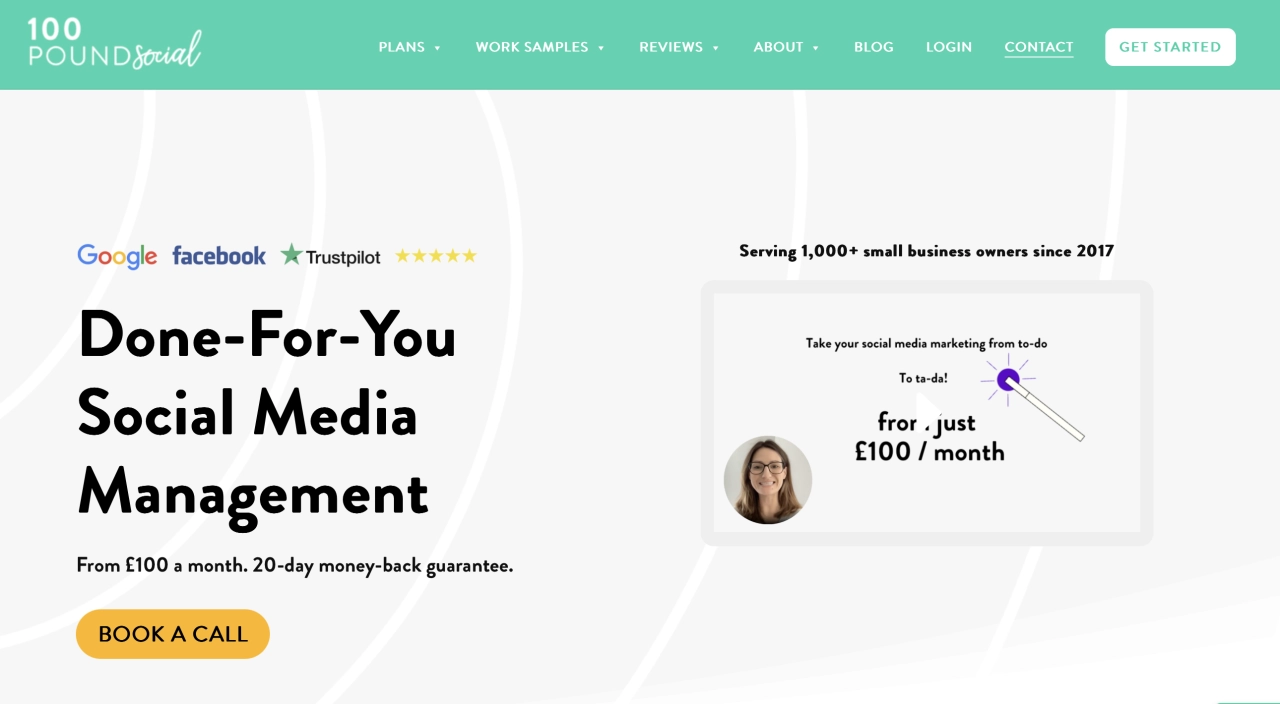
Social media agencies typically offer custom packages with varying deliverables and complex pricing structures, which makes comparison shopping difficult for clients.
100 Pound Social offers a simple monthly recurring service starting at £100. The basic plan includes three unique posts per week on two platforms, plus an account manager. By standardizing deliverables and simplifying pricing, they grew their client base by 215% since implementing the productized model.
Why it works: Simple pricing (just £100, as the name suggests), clear deliverables, and a recurring revenue model. For clients who need more, they offer higher-priced plans with additional features like Instagram posting and Facebook Ads campaigns.
Frequently asked questions
Can I productize just one part of my business?
Absolutely. This is often the best way to start. Instead of trying to change your entire business model overnight, identify one high-demand, repeatable service you offer and productize it first. This product-within-a-service can act as a fantastic entry-point for new clients and a great way to test the model with lower risk.
What is the biggest mistake people make when they first productize?
The most common mistake is underestimating the need for rigid systems, especially for client intake. With a custom service, you can handle messy client onboarding. With a productized service, you need to collect all necessary information upfront in a standardized way. A poor intake process creates a bottleneck that immediately undermines all the efficiency you’re trying to create.
How do I handle clients who still want customization?
Set clear expectations from the very beginning. Your sales page and onboarding materials must clearly define what’s included and what’s not. You can also offer add-ons for common customization requests at a fixed price. For clients who need something completely custom, maintain your traditional, proposal-based service as a separate, premium offering.
Does productizing mean I have to lower my prices?
Not at all. In fact, many agencies increase their effective hourly rate after productizing. You should price based on the value and the outcome you deliver, not the time it takes you. Because you are building efficiencies into your process, your profit margins can be significantly higher than with custom work, even at a competitive price point.
Is productization only for digital services like marketing or design?
No. As the examples in this guide show, the model can be applied to almost any service where the process can be standardized. We’ve seen it work for law firms, accounting firms, recruiting agencies, coaching, and even home services. The key is a repeatable process and a definable outcome, regardless of the industry.
How do I know what my first productized service should be?
Look at your last 10–20 projects. Where was the most overlap? What service did clients request most often? What process is already the most streamlined within your agency? That intersection of market demand and internal efficiency is the perfect place to find your first productized offer.
Do I need a team to offer a productized service?
You don’t need a large team, but you do need to adopt a systems mindset. Initially, you might be the one executing the system. However, the service should be designed from day one so that you can eventually hire someone and delegate the execution to them by handing over your documented standard operating procedures (SOPs). This is the key to true scale.
Your path forward: from decision to implementation
If you’ve completed the assessment and your service scores well, you’re ready to move from “Should I?” to “How do I?”
The biggest thing when moving from custom services to productized services is that you have to change your mindset from ’I’m the expert, I can just do it,’ to something like, ’How do I make this so it can be done by anyone (or the properly trained people)?’ You have to become a systems thinker.
 Tucker Max,
Scribe
Tucker Max,
Scribe
My complete guide on how to productize a service walks you through the strategic decisions and implementation steps, including:
Market positioning: Finding your niche and understanding what clients actually need
Differentiation: Setting yourself apart from competitors in a meaningful way
Pricing strategies: Value-based, cost-based, and hybrid pricing models
Service design: Creating tiers and defining clear scope boundaries
Technical setup: Choosing platforms and building your client portal
Launch process: Testing your flow before going live
Once you've successfully productized your first service, my 3-pillar framework for scaling productized services shows you how to grow without sacrificing quality.
Use the assessment to see where you actually stand. Fix the gaps before you start building. Beyond fit, there are operational challenges that trip up even well-suited services—pricing mistakes, scope creep, cash flow gaps. Better to anticipate them now. Get the clarity upfront, address what needs work, and you’ll build something that actually scales.
Related Articles
More insights on Productized Services

You're in good company. We've helped agencies like yours sell $500M+ in services.
